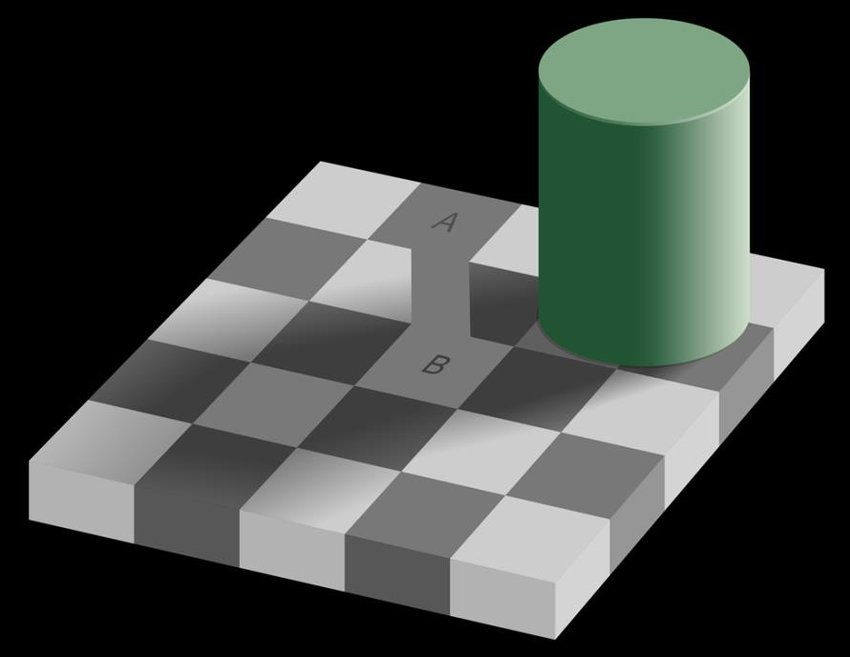Do you know about the Chessboard Illusion?
- drgunjandeshpande

- Aug 23, 2023
- 3 min read
The world of illusions and optical tricks has fascinated human minds for centuries, challenging our perceptions and revealing the intricate ways our brains process visual information.

As the world gathers to witness the intense battles of the World Cup Chess finals, the strategic manoeuvres and intellectual prowess displayed on the board spark a fascination for the intricate game of chess. Today, inspired by the game, let us delve into a different facet of chess – a realm where the mind's perception and reality intertwine.
One such phenomenon is the Chessboard Illusion, a visual puzzle that confuses our senses and makes us question the reliability of our eyes. In this blog, we'll know more about this illusion, uncover its mechanics, and explore the psychology behind it.
The Chessboard Illusion Unveiled
The Chessboard Illusion, also known as the Checker Shadow Illusion, was first introduced by neuroscientist and psychologist Edward H. Adelson in 1995. It is a visual illusion that deceives our brains into perceiving two squares of the same colour as different, due to the surrounding cues and context. The classic version of the illusion involves a pattern of alternating dark and light squares on a chessboard, with a cylindrical tower casting a shadow across two of the squares.
The Illusion in Action

At first glance, the squares labelled 'A' and 'B' under the shadow appear to be different colours. 'A' seems darker than 'B.'
However, when isolated from their context and compared directly, it becomes evident that both squares are, in fact, the same shade of grey.
This paradoxical phenomenon demonstrates how our brains process visual information based on surrounding cues and context.
Understanding the Mechanism
The Chessboard Illusion works due to a combination of factors: lighting, shadow, and context. Our brains have evolved to interpret scenes based on the assumption that light comes from above. Thus, we interpret 'A' as being in shadow and 'B' as being in the light. This interpretation influences how our brains process colour information.
Additionally, our brains make unconscious adjustments to perceived colours based on the surrounding context. The presence of the shadow enhances the illusion, causing us to perceive 'A' as darker than 'B' due to the contrast between the shadowed square and the surrounding lighter squares.
Perception vs. Reality
The Chessboard Illusion highlights a fundamental truth about human perception – what we perceive is not always an accurate representation of reality. Our brains constantly make assumptions and interpretations to process the overwhelming amount of sensory information we receive. Illusions like this remind us that our perception is not a direct window to the world but rather a constructed mental model influenced by various contextual cues.
The Role of Gestalt Principles
Gestalt psychology, a school of thought focused on how humans perceive and organize visual information, sheds light on the Chessboard Illusion. Gestalt principles, such as figure-ground segregation and similarity, play a significant role in how we interpret the illusion. The illusion capitalizes on our tendency to separate objects from their backgrounds and group similar elements together.
Implications and Applications

The Chessboard Illusion not only entertains and intrigues but also has practical implications in fields such as psychology, neuroscience, and even design. It showcases the intricacies of visual processing, emphasizing the importance of context and the limitations of our perception. In design, understanding the power of context and visual cues can help create impactful and engaging visuals that resonate with viewers.
The Chessboard Illusion stands as a testament to the complexity of human perception. Its ability to deceive our senses challenges our understanding of reality and forces us to reconsider how we interpret visual information. As we continue to unravel the mysteries of the mind, illusions like these remind us that what we see is not always what we get – and that the world of perception is as captivating as it is enigmatic. So, the next time you encounter an optical illusion, take a moment to appreciate the intricate dance between your eyes and your brain and remember that things are not always as they appear.
Do let us know about our blog in the comments below.










Never know of this
Interesting